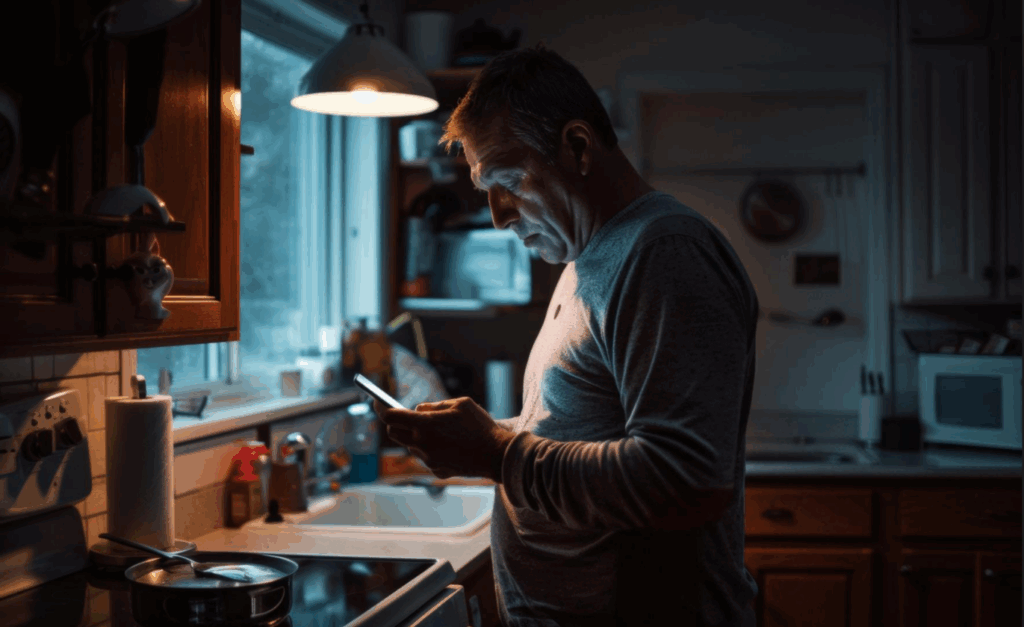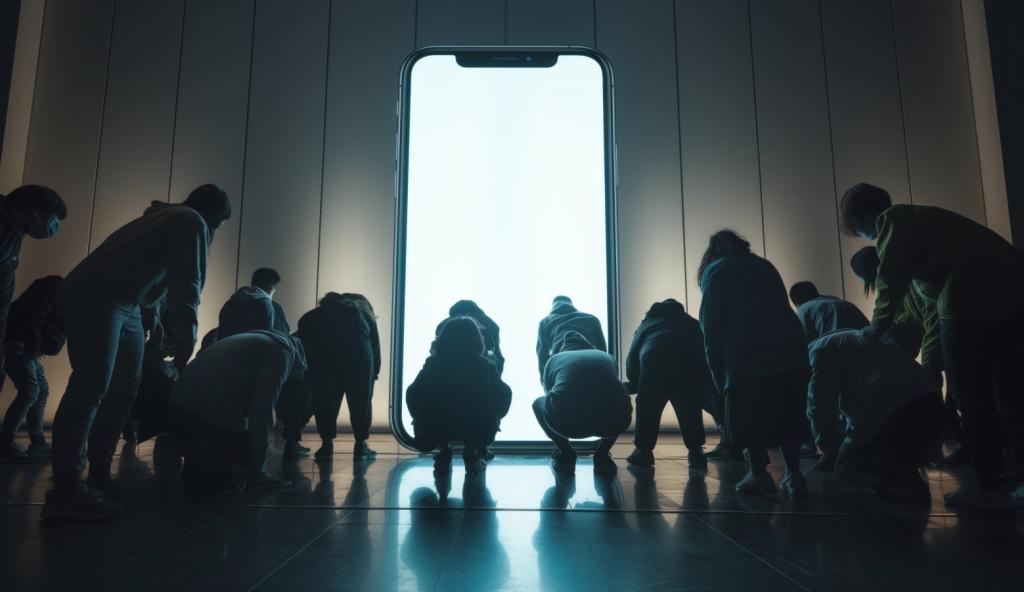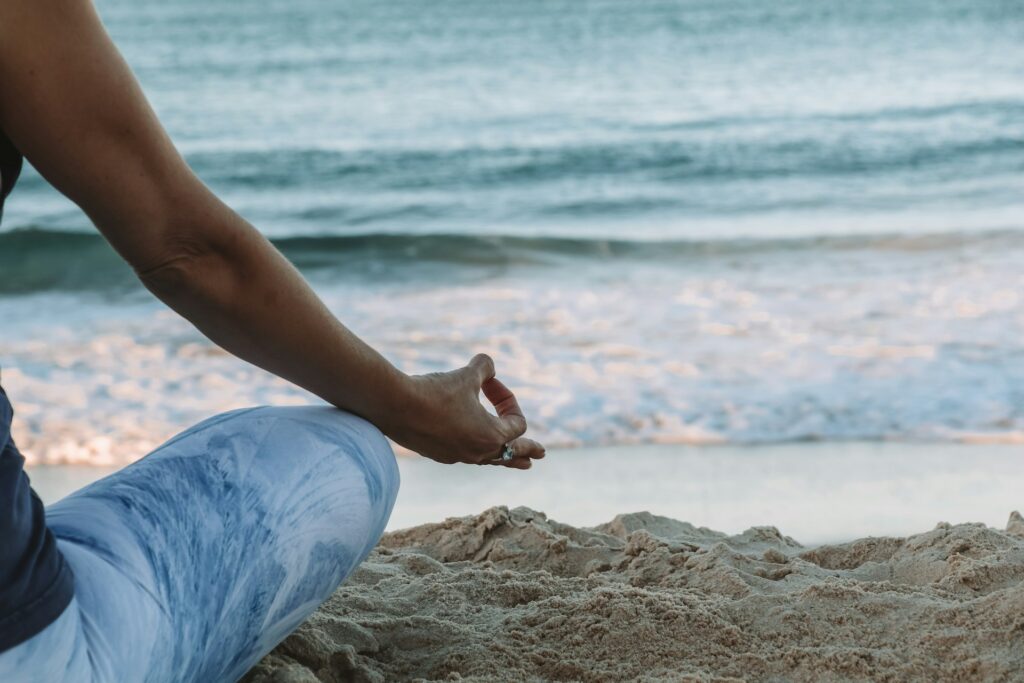Ever wonder why you’re wide awake at 2 AM after scrolling through TikTok “for just five minutes”? You’re finally in bed after a long day, and you decide to check your phone “real quick.” Three hours later, you’re still wide awake, eyes burning, mind racing, wondering why sleep feels so elusive. Sound familiar?
If you’ve ever found yourself in this exact scenario (and let’s be honest, who hasn’t?), you might be experiencing the not-so-magical effects of blue light on your sleep cycle. But before you start panicking about your nighttime phone habits, let’s dive into what’s actually happening and explore some practical solutions that don’t require throwing your devices in a drawer forever.
The Science Behind the Glow
Our relationship with light is more complex than simply “bright = awake, dark = sleepy.” Deep within our brains sits a tiny region called the suprachiasmatic nucleus – think of it as your body’s internal clock tower. This biological timekeeper relies heavily on light cues to determine when it’s time to feel alert and when it’s time to wind down.
For thousands of years, humans operated on a pretty straightforward schedule: sunrise signaled wake-up time, sunset meant it was time to start preparing for rest. Our ancestors didn’t have to worry about the blue-white glow of smartphone screens, LED monitors, or energy-efficient light bulbs disrupting this natural rhythm.
Blue light, which sits on the shorter wavelength end of the visible light spectrum, is particularly effective at suppressing melatonin production. Melatonin, often called the “sleep hormone,” is naturally released by your pineal gland as darkness falls, helping signal to your body that it’s time to sleep. When blue light hits your retinas, especially in the evening hours, it can trick your brain into thinking it’s still daytime, keeping you in an alert state when you’d rather be drifting off to dreamland.
Research from Harvard Medical School has shown that exposure to blue light in the evening can shift your circadian rhythm by as much as three hours. That means if you’re usually ready for bed by 10 PM, evening blue light exposure might have you feeling wired until 1 AM instead.
Your Devices: The Usual Suspects
Let’s take a moment to acknowledge the elephant in the room – or rather, the glowing rectangles scattered throughout our homes. Our modern lives are surrounded by blue light sources:
Smartphones and Tablets: These pocket-sized sleep disruptors are probably the biggest culprits. The average American checks their phone 96 times per day, and many of us use our devices right up until bedtime (or even in bed). The close proximity of these screens to our faces means we’re getting a concentrated dose of blue light right when our bodies should be winding down.
Computer Monitors and TVs: Whether you’re binge-watching your latest Netflix obsession or finishing up work emails, these larger screens emit significant amounts of blue light. The “just one more episode” phenomenon becomes even more problematic when you consider the sleep-disrupting effects of blue light exposure.
LED and Fluorescent Lighting: It’s not just screens – many of our home lighting systems emit blue light too. Those bright, “daylight” LED bulbs that help you feel alert during the day? They might be working against you in the evening.
Beyond Just Falling Asleep: The Ripple Effects
The impact of blue light on sleep goes beyond simply making it harder to fall asleep. Poor sleep quality can create a domino effect that touches virtually every aspect of your daily life.
When your sleep is disrupted, you might notice changes in your mood, energy levels, and ability to concentrate the next day. You might find yourself reaching for extra cups of coffee or sugary snacks to combat fatigue. Your patience might run thin more quickly, and tasks that usually feel manageable might seem overwhelming.
Over time, consistently poor sleep can impact your immune system’s ability to function optimally, affect your body’s ability to regulate hunger hormones, and even influence your skin’s appearance and healing processes. It’s amazing how something as simple as scrolling through your phone before bed can set off such a chain reaction.
Real People, Real Stories
Sarah, a marketing manager from Austin, found herself in a frustrating cycle. “I’d be exhausted all day, counting down the hours until I could finally get into bed. But then I’d lie there scrolling through Instagram, watching TikToks, checking emails – you name it. Before I knew it, it was midnight or later, and I felt more awake than when I first got into bed.”
Mike, a college student in Portland, noticed the pattern too. “I always wondered why I felt so much more tired during finals week, even though I was spending more time in bed. Turns out, all those late-night study sessions staring at my laptop screen were messing with my sleep quality, not just my sleep quantity.”
These stories highlight something important: it’s not always about the total hours spent in bed, but the quality of sleep you’re actually getting.
Practical Solutions That Actually Work
The good news? You don’t need to go completely off-grid or invest in expensive gadgets to start improving your sleep quality. Here are some strategies that real people have found effective:
The Digital Sunset Approach: Try implementing a “digital sunset” one to two hours before your intended bedtime. This means dimming or turning off electronic devices and switching to activities that don’t involve screens. You might read a physical book, try some gentle stretching, practice meditation, or simply have a conversation with family members or roommates.
Blue Light Filters and Settings: Most modern devices now come with built-in blue light filters. On iPhones, it’s called “Night Shift,” while Android devices have “Blue Light Filter” settings. These features automatically adjust your screen’s color temperature as evening approaches, reducing blue light emission. While not a perfect solution, many people find these settings helpful as part of a broader sleep hygiene routine.
Environmental Adjustments: Consider swapping out bright, cool-toned LED bulbs in your bedroom and main living areas for warmer, dimmer alternatives in the evening. Some people invest in smart bulbs that can be programmed to gradually dim and warm up as bedtime approaches, mimicking a natural sunset.
The Charging Station Strategy: Set up a charging station for all devices outside of your bedroom. This removes the temptation to check your phone if you wake up during the night and helps create a mental boundary between your sleep space and your digital life.
Blue Light Blocking Glasses: While the research is still evolving, some people find that wearing blue light blocking glasses in the evening helps them feel more ready for sleep. These glasses are designed to filter out blue light wavelengths, potentially reducing the impact on melatonin production.
Creating Your Personal Sleep Sanctuary
Think of your bedroom as a sanctuary designed specifically for rest and relaxation. This means making it as conducive to sleep as possible:
Consider blackout curtains or shades to block outside light sources. Even small amounts of light from street lamps, car headlights, or early morning sun can interfere with sleep quality.
Pay attention to temperature – most sleep experts suggest keeping bedrooms slightly cool, around 65-68°F (18-20°C). Your body’s core temperature naturally drops as you prepare for sleep, and a cooler environment can support this process.
Evaluate your bedding and mattress comfort. While everyone’s preferences are different, having a comfortable sleep surface that supports your body properly can make a significant difference in sleep quality.
The Gradual Approach: Small Changes, Big Impact
If the idea of completely overhauling your evening routine feels overwhelming, start small. Pick one or two changes that feel manageable and experiment with them for a week or two. You might be surprised at how even minor adjustments can lead to noticeable improvements in how you feel.
For example, you might start by charging your phone in the living room instead of on your nightstand. Or try reading for 15 minutes before bed instead of scrolling social media. Small, consistent changes often prove more sustainable than dramatic overhauls.
Building Better Evening Habits
Developing a consistent evening routine can help signal to your body that it’s time to start winding down. This routine doesn’t need to be elaborate or time-consuming – it just needs to be consistent.
Your routine might include dimming lights around the house, switching to warmer lighting, taking a warm shower or bath, doing some light stretching, practicing gratitude journaling, or listening to calming music or podcasts (at low volume, with a sleep timer).
The key is finding activities that help you transition from the alertness of daytime to the relaxation needed for quality sleep. What works for one person might not work for another, so feel free to experiment and find what feels right for you.
Looking at the Bigger Picture
While blue light exposure is certainly a factor in modern sleep challenges, it’s worth noting that quality sleep is influenced by many factors. Stress levels, caffeine intake, exercise habits, meal timing, and overall health all play roles in how well you sleep.
Regular physical activity, for instance, can help improve sleep quality – though vigorous exercise close to bedtime might have the opposite effect. Managing stress through techniques like meditation, deep breathing, or journaling can also support better sleep.
Pay attention to your caffeine intake, especially in the afternoon and evening. While people have different sensitivities to caffeine, consuming it too late in the day can interfere with your ability to fall asleep or achieve deep, restorative sleep stages.
The Technology Balance
The goal isn’t to demonize technology or eliminate it from your life entirely. Our devices serve many valuable purposes – they help us stay connected with loved ones, access information, work efficiently, and entertain ourselves. The key is finding a balance that allows you to enjoy the benefits of technology without letting it interfere with your sleep and overall well-being.
Some people find it helpful to designate certain times of day as “screen-free” periods. Others prefer to use apps that track their screen time and send gentle reminders when they’ve been using devices for extended periods.
Listening to Your Body
Perhaps most importantly, pay attention to how different habits affect how you feel. Do you notice a difference in your energy levels on days following screen-free evenings? How do you feel after nights when you’ve used blue light filters versus nights when you haven’t?
Your body provides valuable feedback about what works and what doesn’t. Trust these signals and adjust your habits accordingly. What matters most is not following someone else’s perfect routine, but finding an approach that works for your lifestyle and helps you feel your best.
Moving Forward
Improving sleep quality is rarely about making one dramatic change – it’s usually about making several small, sustainable adjustments that work together to create better conditions for rest. Be patient with yourself as you experiment with different approaches, and remember that it can take time for your body to adjust to new routines.
The relationship between blue light and sleep is just one piece of the larger sleep quality puzzle. By understanding how light affects your body’s natural rhythms and making thoughtful adjustments to your evening routine, you’re taking positive steps toward better rest and, ultimately, better days.
Sweet dreams – your well-rested future self will thank you.

Disclaimer: This article is for informational and educational purposes only and is not intended as medical advice, diagnosis, or treatment. The information provided should not be used as a substitute for professional medical consultation, diagnosis, or treatment. Individual sleep needs and responses to environmental factors can vary significantly. If you have persistent sleep problems, chronic insomnia, or other sleep-related concerns, please consult with a qualified healthcare professional for personalized guidance. Always seek the advice of your physician or other qualified health provider with any questions you may have regarding sleep disorders or other medical conditions.
Sources and References:
- Harvard Medical School, Sleep Medicine Division
- National Sleep Foundation research publications
- American Academy of Sleep Medicine guidelines
- Circadian rhythm research from leading sleep research institutions
- Peer-reviewed studies on blue light and melatonin production



